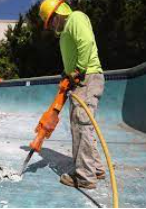The Wallumedegal Aboriginal people lived on the northern side of the Lane Cove River. However, a mere thirty years after colonisation predominately by Europeans the Wallumedegal had been dispossessed to the upper reaches of the river.
The following summary of the Wallumedegal draws heavily on the work of Dr Val Attenbrow, the north shore Aboriginal Heritage Office and personal observations and reports of various members of the First Fleet[1].
When the English arrived at Warrane (Port Jackson) in January 1788 there were three Aboriginal tribes inhabiting the lower north shore (as shown in the map below). In the vicinity of the Mosman district were the Borogegal. The largest group, the Gayamaygal, were along Warrin ga (Middle Harbour) and the country from Kuba Kaba (Middle Head) to the country of the Darramurragal clan to the north-west. The Wallumedegal inhabited the northern shore and along the Turrumburra (Lane Cove River).
Aboriginal tribes of the northern shore [i]
The Wallumede mob inhabited the country on the northern side opposite Warrane (Sydney Cove) [ii]. They were part of the Aboriginal Sydney Language Nation (some time mistakenly called Eora and later Biyal-Biyal). [iii]
In February 1790, Governor Arthur Phillip wrote: “… the opposite Shore (northern shore of Sydney Harbour} is called Wallumetta [iv] & the Tribe Wallumedegal”. Then in April 1790, Lt. King wrote “the tribe of Wallumade inhabit the North Shore opposite Warrane”. In Phillip’s 1793 book ‘Transactions at Port Jackson and Norfolk Island’, Wallumedegal appears as the sixth in the list of the names of the eighteen ‘Tribes’ around Sydney Cove”. Historian George Thornton wrote that “there was another tribe a little west of opposite Sydney Cove; those were called Walumetta”. [v] In First Fleet reports, the Wallumedegal were said to occupy the north shore of Port Jackson (Sydney Harbour) immediately opposite Sydney Cove and west along the north shore of the Par-ra-mat-ta (Parramatta River). [vi]
Later historians mention that “the Wallumedegai lived in the North Shore area of Sydney. [vii] . Willoughby Librarians noted that “the Wallumedegal clan may have also had a close association with the Willoughby area” and “today, few if any of the Aboriginal people living in the northern suburbs can trace their ancestry to the … Wallumedegal clan.” [viii] Warner [ix] also mentions that “opposite Sydney Cove, on the North Shore, lived the Wallumedegal”. Currie commented that “the Lane Cove River was believed to be the home of the Wallumedegal”. [x]
Within 30 years of predominately European settlement the Warrumedegal had effectively been dispossessed from the lower reaches of the Turrumburra (Lane Cove River) and Sydney Harbour. A French tourist to Australia (Capt. Louis de Freycinet) reported that by 1819: “the Wallumedegal did not occupy the north shore opposite Sydney Cove. [xi] Freycinet had been rowed along the Par-a-matta (Parramatta) river from Warrane in 1819.
Read the full story of the Wallumedegal





